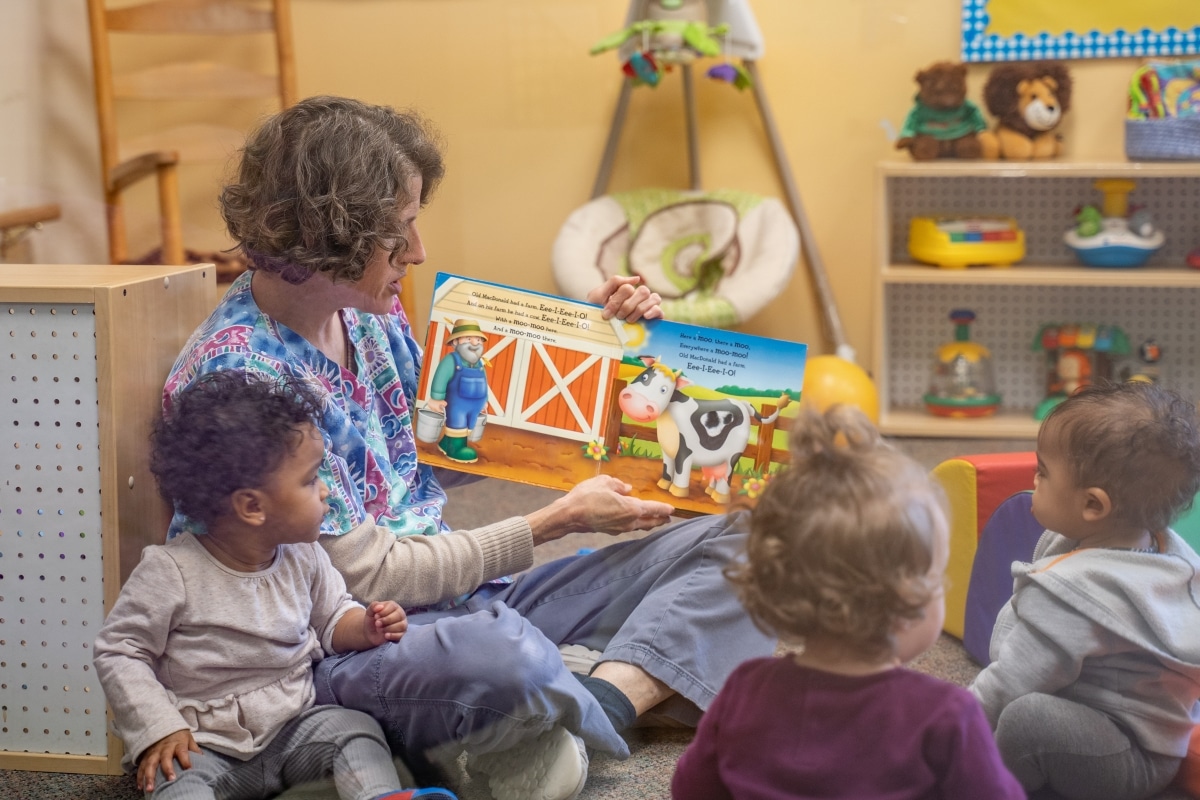By Erin McFarland
In our highly technical age, handwriting as a whole seems to be an antiquated concept in our education systems. How often do we handwrite things in our daily lives? Moreover, cursive writing seems to be an old-fashioned way of communicating. Is cursive a necessary skill to teach young children? Or is it an outdated art form?
Historically, Montessori schools teach cursive. This is partly due to the fact that Maria Montessori taught her students in this way. It was the way writing was done in her time. We continue that form of education, not just because it is historical and traditional, but because teaching young children cursive first has many benefits.
When a child first learns to write, they typically make curves or loops. In fact, a straight line is very difficult for a small child to write, especially lines that cross each other. However curved lines that flow together are naturally intuitive to the way a child first begins to write. Also, children that have learning disabilities, like dyslexia, have fewer issues with cursive writing because they can easily differentiate letters like b and d and p, which they would usually have a hard time with. (The Room 241 Team, p. 3) Children that are left-handed also potentially benefit from learning cursive first. The fluid nature of cursive, as opposed to the start and stop of printing, is usually more easily accomplished for someone that is left handed.
Cursive uses more than one part of the brain and is, therefore, an excellent tool for cognitive development. It is a tool for “functional specialization”, this is how the brain practices for maximum efficiency. (James, p. 26) When our brains are required to do more than one thing at a time, it strengthens the brain and prepares it for more complex skills. When students write in cursive, they are not only thinking about how they are forming the letters, they are focusing on the sensation of writing and reading the words as well. Forcing the brain to do more than one thing at a time is the exercise it needs for optimal results. This also leads right into the study of what is known as “haptic” learning as well. This is the study of “interactions of touch, hand movements and brain function.” (Berniger) Therefore the use of multi-functional cursive is a practice that is beneficial to sensitive haptic learners also.
Cursive is the language of history. Some of the most important documents in the history of the United States are written in cursive. Students should be able to have the privilege of reading documents like the Declaration of Independence and the Bill of Rights. These parts of history would be a mystery to someone that could not read cursive.
Cursive sets a child up for success. There is evidence that children who write in cursive score better on reading and spelling tests. (Steinmetz, p. 2) This may be true because children can focus on whole words more easily because of the natural space between words and picking up their pencil in-between writing words. Also, cursive is typically thought of as more challenging than printing. Children normally do not have difficulty learning to print after learning cursive. They also gain confidence from the fact that they have learned something challenging.
Learning how to write in cursive is still beneficial to young children. It is naturally intuitive to a beginning writer, it promotes cognitive development, it connects us to our history and it sets children up to be successful. Beyond that, it is an art form that can be personal, creative and expressive. Children enjoy writing in cursive simply because it is a beautiful way to express themselves. This is really why we continue to teach cursive in our Montessori environments.
References:
Berninger, V. “Evidence-Based, Developmentally Appropriate Writing Skills K-5: Teaching Orthographic Loop of Working Memory to Write Letters So Developing Writers Can Spell Words and Express Ideas.” Presented at Handwriting in the 21st Century?: An Educational Summit, Washington D.C., January 23, 2012.
James, Karin H. and Atwood, Thea P. (2009). The role of sensorimotor learning in the perception of letter-like forms: Tracking the causes of neural specialization for letters. Cognitive Neuropsychology. 26 (1), 91-100.
The Room 241 Team, (2012, Nov. 6). 5 Reasons Cursive Writing Should be Taught in School [College web post]. Retrieved Nov. 5, 2018, from https://education.cu-portland.edu
Steinmetz, K. (2014, June 4). Five Reasons Kids Should Still Learn Cursive Writing. Retrieved from http://time.com











